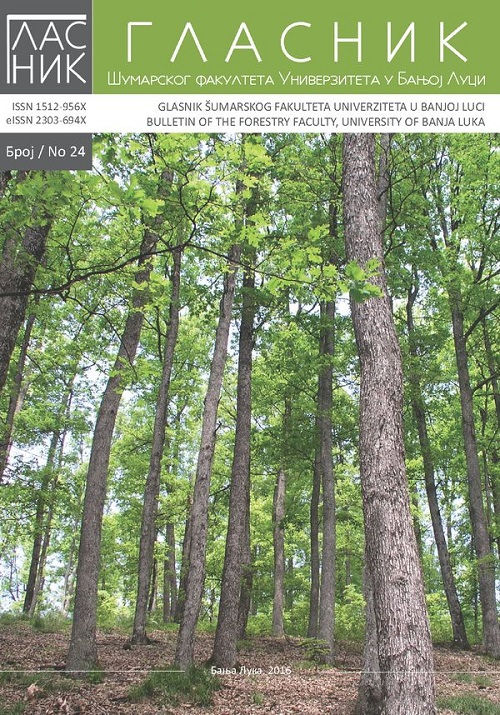ABOVEGROUND DENDROMASS ESTIMATION OF JUVENILE PAULOWNIA SP.
DOI:
https://doi.org/10.7251/GSF1624005SAbstract
Species of the genus Paulownia have been introduced to Bulgaria since the beginning of the XXth
century and their multipurpose uses - as ornamental trees, for wood and biomass production
- have been tested ever since. We present a study, which examines the early growth of four Paulownia
clones at southern locations in Bulgaria and derives biometric models for dendromass estimation
of juvenile Paulownia trees.
The data originated from two experimental plantations established on nursery land using one-yearold
in vitro propagated plant material. Forty six, 1 to 3 year-old saplings from two clones of P. tomentosa
and two P. elongata × P. fortunei hybrids were sampled. Their stem biomass was modeled
as a function of the breast height tree diameter and total tree height or the stem diameter alone
and a set of goodness-of-fit criteria was applied to select the most adequate among the 29 tested
formulations. The regression models were fitted in log-transformed form to the logarithm of the
stem biomass and MM correction factor for bias was applied to the back-transformed prediction
data. Two allometric relationships were derived, which adequately assess stem dendromass of
young Paulownia sp. from easily measurable tree characteristics. Both models are applicable for
stem biomass estimation of juvenile Paulownia trees of diameter up to 5 cm and total height up
to 3.5 m.
